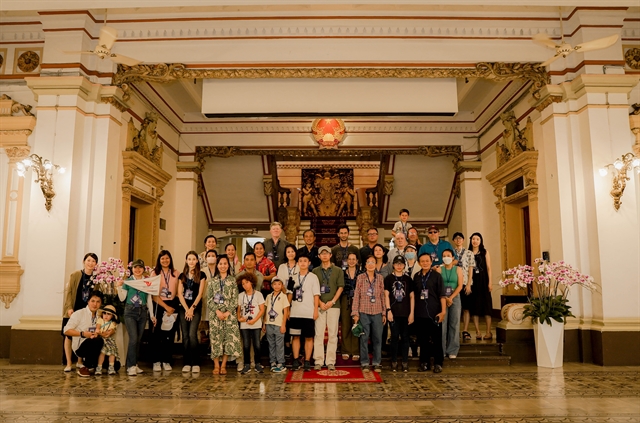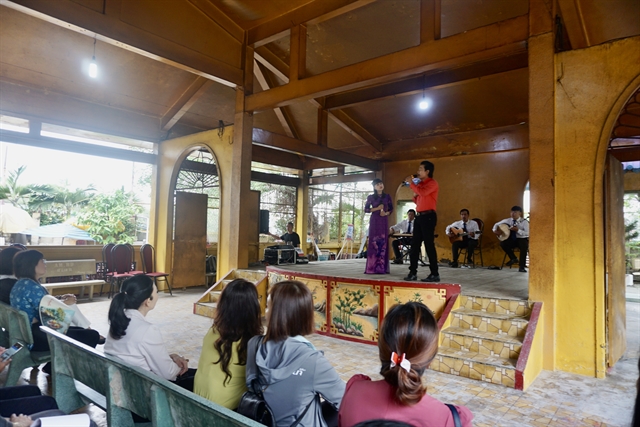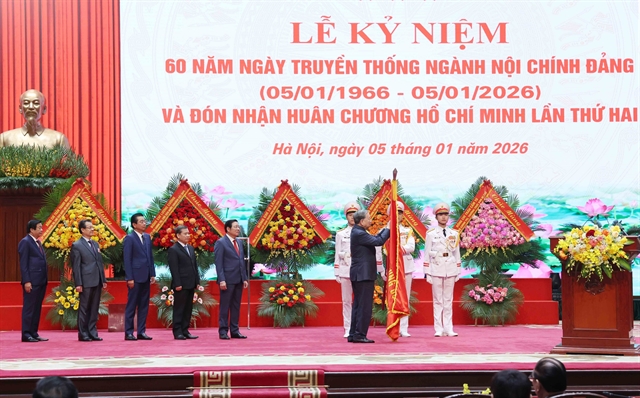 Sunday/Weekend
Sunday/Weekend

 |
| Visitors at the Independence Palace in HCM City on the National Reunification Day on April 30. VNA/VNS Photo |
by Thu Hằng
Tourism and culture authorities in HCM City are coordinating to exploit cultural and historical heritage assets for development of heritage tourism and increase the city’s competitiveness as a top tourist destination in Asia.
A series of heritage tours have been developed to exhibit the unique culture and history of the city.
The headquarters of the municipal People’s Council and People’s Committee, or the City Hall, one of the unique artistic architectural works in the city, opened its doors to visitors for the first time to celebrate the national holidays of Hùng Kings Commemoration Day on April 29 and the National Reunification Day on April 30.
The City Hall building, which was built between 1898 to 1909, was recognized as a national art architecture site in 2020.
 |
| The headquarters of HCM City People’s Council and People’s Committee. VNA/VNS Photo Hồng Đạt |
It was the first time locals and foreign visitors were allowed to visit the government offices as part of efforts to exhibit the city’s cultural heritage.
The 110-year-old building received 1,500 domestic and foreign visitors during the two days, according to the city’s Department of Tourism.
 |
| Visitors at the City Hall on the Hùng Kings Commemoration Day on April 29. Photo courtesy of the Department of Tourism |
The tourism authority proposed opening the City Hall during national holidays, the new year holiday or weekends at the end of each month.
Cultural heritage tours
The city is home to 185 historical and cultural heritages, including two special national heritage sites, 58 national heritages and 125 city-level heritages, according to the city's Department of Culture and Sports.
Last year, museums and heritage sites in the city received more than 1.5 million visitors, including more than 206,000 foreigners.
The city has two intangible cultural heritages that have been recognised by the UNESCO, including ca trù (ceremonial singing) and đờn ca tài tử (southern folk music).
Trần Thế Thuận, director of the Department of Culture and Sports, says the city is the country’s top tourist destination due to its rich historical, religious and cultural heritage.
The department has focused on efforts to preserve historical and religious sites and cultural heritage, which are invaluable resources to develop heritage tourism.
Bùi Thị Ngọc Hiếu, deputy director of the city’s Department of Tourism, says the city’s Tourism Development Strategy from now until 2030 outlines the vital role of historic and cultural heritage attractions in the development of tourism products.
The city is home to diverse cultural resources that can be developed for cultural heritage tourism, she says.
The city’s initiative, “Each district has at least one product”, which has been implemented since the beginning of last year, is aimed at diversifying tourism products that exhibit the unique culture and historic values of each district, she adds.
The authorities of Thủ Đức City and 21 districts in coordination with travel firms have launched 30 tourism products that embrace historical and cultural heritages as highlights of the tours.
These new travel products take visitors to many heritage sites and explore different corners in the city.
"Besides the most visited landmarks in the city, such as the Independence Palace, the War Remnants Museum, and the Central Post Office, there are many historic and cultural heritages that can be exploited to attract tourists," says Nguyễn Ngọc An, deputy general director of Fiditour-Vietluxtour.
District 5’s authorities in partnership with Fiditour-Vietluxtour last year launched the Ký ức Sài Gòn - Chợ Lớn (Sài Gòn – Big Market Memories) tour that highlights the unique cultural and historical values of the old trading hub known as Chợ Lớn.
The tour takes visitors to the national historic monument House No 5 where young patriot Nguyễn Văn Ba (who later became President Hồ Chí Minh) stayed before embarking on his journey abroad for national salvation in 1911, and the city-level historic monument Thiên Tôn Pagoda, a safe base for the high-ranking revolutionary officials of the Sài Gòn-Gia Định area during the two resistance wars, among other cultural and historic heritage sites in the district.
 |
| Cải lương artists perform at the Bình Đông Temple in District 8 to serve tourists. VNS Photo Thu Hằng |
Visitors can enjoy performances of kylin and dragon dances as part of the tour to Chợ Lớn.
In the coastal district of Cần Giờ, the first community-based tourism product was launched on Thiềng Liềng Island earlier this year.
Visitors can explore unique features of mangrove forests, local cultural values and the peaceful way of life on the island.
Cultural tourism is expected to account for 20 per cent to 25 per cent of total tourism revenue of US$130 billion by 2030, according to the Ministry of Culture, Sports and Tourism. VNS




